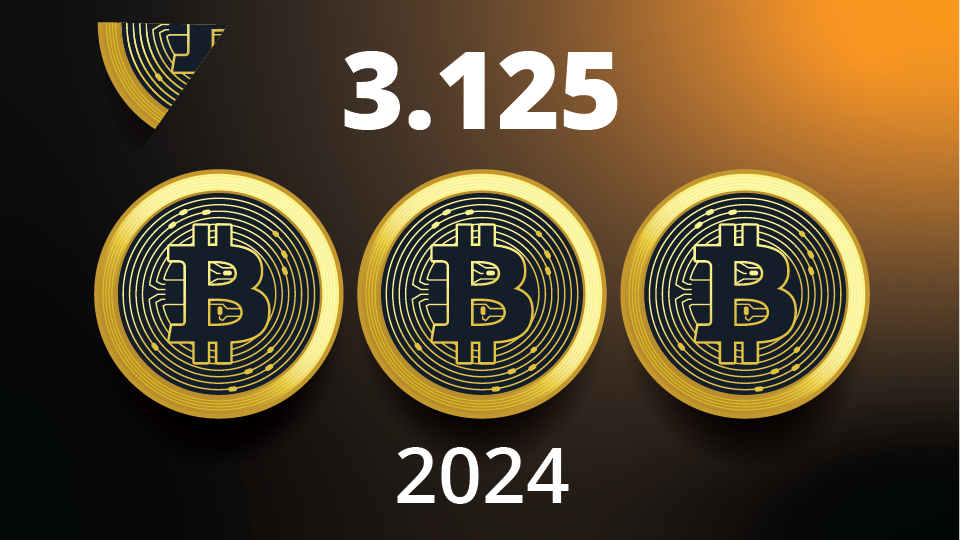My Journey from TradFi to Crypto
May 19, 2022
Read Time 11 MIN
Please note that VanEck may have a position(s) in the digital asset(s) described below.
Hello, (crypto) World!
Today marks a new chapter in my life. I leave the traditional finance (TradFi) world to join the Web3 movement. I’ll be launching and managing the VanEck Digital Assets Alpha Strategy with a fantastic team who have experience in both traditional and digital assets. I want to introduce myself here and focus on four key topics:
1. My Background and Perspective
I’m not a novelist. English is my second language. I’m used to communicating my thoughts in the fewest number of words possible and avoiding technical jargon.
I was born in Bangalore, India to parents who, as medical doctors, emphasized the importance of math and science. We migrated to the U.S. when I was 13, and I spent most of my teenage years on the math team, playing video games (Halo and CS) and making film. I developed an interest in investing during my senior year of high school as it offered me a direct path to minimize and pay off my student loans. The book, The Intelligent Investor by Benjamin Graham, inspired me to attend NYU Stern to study Finance.
I was lucky enough to be college roommates with Kyle Samani from Multicoin Capital, who I would credit for introducing me to the world of Web3. More on this later.
I graduated from Stern in late 2011 and joined the world of distressed credit investing. After a brief sales/trading analyst program at UBS, I spent ~5 years at Hutchin Hill Capital, a multi-strategy hedge fund. I was a research analyst investing in distressed technology and energy companies. During my time in this position, oil prices collapsed from $100 a barrel to $20, and I learned how to invest through market cycles and evolve with the times. This experience helped me to gain invaluable skills in valuation, fundamental research/diligence, and debt covenant/credit agreement analysis. Most importantly, I learned valuable lessons in game theory (constantly asking, “How can I get screwed?”) and thinking in terms of probabilities (“What are the chances I get screwed?”). While equity investing (especially in Venture) is about asking “How big is my upside?”, credit investing is a great way to learn about asking “How can I best manage my downside risks while maximizing my total return?” Through my personal investing, I learned firsthand ways to approach the former question. Some personal successes include Tesla, SpaceX, Airbnb, Robinhood and Lyft.
My success investing through the energy cycle brought me to Angelo, Gordon & Co. in 2018, where I joined the newly launched Liquid Credit Investing business as the Head of Research. This afforded me an opportunity to broaden my sector lens while helping me scale my process with a team of talented analysts. The role also exposed me to the world of fundraising and building a new investing business from scratch. In early 2020 (mid-pandemic), I was given the incredible opportunity to join Izzy Englander’s Millennium Management as a Portfolio Manager. This is where I picked up my much-needed skills in portfolio construction and risk management. It’s also where I started paying very close attention to macro/global central bank policy and cross-asset correlations.
So where does crypto fit into all of this? During the Summer of 2017, I was visiting Kyle Samani in Austin, TX, and he couldn’t stop talking about Ethereum. None of it made much sense to me at the time, but it inspired me to start learning. I spent most of 2017 scrolling Coinmarketcap, researching individual projects, reading whitepapers/blog posts, and listening to podcasts. I made small investments to learn and played around with the limited number of applications that were available. I was most excited about the promise of prediction markets (such as Augur). Unfortunately, many applications never delivered, and even when they did, they were delayed and the product experience wasn’t ready for the masses. While I wondered how as an investor I might approach token design and valuation, I was unable to develop much of a framework.
All of this changed in 2019 when I came across what CZ had built with Binance and the role of the BNB token within that ecosystem. “Programmable money” now made sense. BNB seemed like a hybrid investment instrument. Specifically, it captured value through a burn mechanism (akin to a share buyback) that was funded by the cash flows generated by the core business. At the same time, this token was used to coordinate/drive user behavior. If you owned BNB, you got fee discounts on trading within the Binance platform. BNB tokens could be used as rewards to incentivize an intended user behavior. It seemed to blur the line between users and investors.
Amazon Prime was launched in 2005 and took ~12 years to get to 100M users. I wondered: if AMZN stock was “programmable”, so that it could have been used as a reward to any loyal Prime user, would Bezos have gotten to 100M users a lot sooner?
Like for many others, 2020–2021 changed everything for me. I had deployed a fair amount of my personal capital in certain projects (thanks to my BNB learnings), and many of the promises of 2017 finally started to come to fruition. From my vantage point, we started with a few DeFi apps and ended with fractionalized music ownership via NFTs1 and many things in between. All seamlessly working together like Lego blocks (as many like to call it). The pace at which applications were coming to market was accelerating. The space was making giant strides in user-friendliness while also seeing real cash flow for the first time as people came in and spent money to use the many products (applications) being offered. In most cases, this cash flow was being captured via tokens and a staking (locking up) process. I could forecast, sensitize and value this cash flow and hence value the underlying tokens.
This was a large part of my pitch to Jan van Eck, CEO of VanEck. I had listened to Jan discuss Bitcoin/digital assets on CNBC and various podcasts for several years. He had the vision to get involved in the space very early. He also had the unique ability to simplify the Bitcoin thesis and speak about it in a jargon-free way. He wanted to make the asset class approachable to a mass audience.
My pitch to Jan was simple: There are ~19,000 investible tokens out there with a combined market value of ~$700B (ex-bitcoin). Both those numbers are going to grow exponentially over the next decade. Tokens are a new capital formation instrument and perhaps a better alternative to stocks/bonds. Let’s build a liquid digital assets strategy that targets absolute return while maximizing the Sharpe ratio.
Key Strategy Characteristics: The strategy invests in 15–30 liquid tokens with a two-year time horizon. It takes a future cash flow valuation-based approach and pairs it with active risk management. I.e., we will dynamically adjust position sizing as the risk-reward of the position changes through price appreciation or depreciation.
While future cash flow-based frameworks might not have succeeded in the past, it is our view that it will increasingly matter as the space grows from retail to institutional.
2. Why Web3 and Why Now?
We believe in programmable money. Financial assets (cash, stocks, bonds, art, real estate, etc.) in the world today are analog, and we believe most assets in the future will be “tokenized” and made programmable. Why? It’s just better and ultimately improves human productivity by removing friction.
People often describe characteristics of Web3 as composable, permissionless and open source. For someone who has never used a set of Web3 applications, these are just words. In order to better describe a Web3 future, I would paint the following hypothetical picture:
Let’s assume I own some stocks in my Robinhood account, a few mutual funds in my Fidelity account and I have some cash in my J.P Morgan checking account. Today (Web 2.0), when I need to use my Uber app to hail a ride, I need to use a credit or debit card. This introduces financial friction (paid to Visa and the banks) and requires several clicks and time on my end (the user) to ultimately settle these transactions at some point in the future. In the world of Web3, I custody my assets. In the Web3 version of the above scenario, Uber would immediately recognize the value in my Robinhood/Fidelity/JPM accounts and allow me to use those assets for payment, skipping a few intermediate steps and the middlemen. Saves everyone time and money. This is composability, when applications can seamlessly communicate with each other on all things of value without any centralized intermediary. In the Web3 version of applications, no one needs to ask Apple for permission to be allowed to host their app in the Apple app store. A 13-year-old can build a useful application, and if people find it valuable, they will pay fees to use it.2 This is the permissionless nature of Web3. It lowers the barriers to entry and exponentially increases the number of interesting app experiments happening. More experimentation yields a higher likelihood of a breakthrough application that ultimately increases human productivity. Lastly, most Web3 apps are open-source. This simply means their code is freely and easily available for anyone to read. If someone notices a better way of doing things, they can take that code, make their edits and launch it as their own product. Open-source code facilitates collective, collaborative and faster progress—i.e., I can build on the great work of someone else, without starting from scratch.
So, why now? We think the space has hit escape velocity. A few years ago, Bitcoin was the only on-ramp to the Web3 world. So if you were someone who didn’t believe in the Bitcoin thesis, you never made it to Ethereum or Solana and never tried the applications built on them. That has all changed in the past 18 months. NBA Top Shot, digital art collectors, music enthusiasts and video gamers are all paying to use Web3 apps because it brings utility to their lives. TikTok isn’t the only application winning the attention game. Web3 applications are a close second. Web3 is coming to you; you don’t need to look for it. In our view, it’s only a matter of time before Web3 will positively transform an experience you personally care about.
Of the ~4B internet users in the world, ~300M of them own digital assets, and only 10–15% of those actually interact with Web3 applications. It’s still very early. We think the number of internet users globally will continue to grow (thanks, Starlink), and we think both the number of people who own digital assets and the number of people who use Web3 applications will continue to grow exponentially.
Because of the “permissionless” nature of Web3, the number of investible tokens will continue to grow at the same exponential pace. The same 13-year-old with an app can launch a token in a few minutes. That said, the number of truly valuable digital assets (tokens) will be limited. A digital asset is valuable if people are willing to pay fees to use it and if those fees can be captured by that digital asset with minimal leakage.
As an investor looking to generate outsized returns, token selection will be critical. The world of Web3 doesn’t have SEC filings, 10Ks/10Qs and earnings calls that make it easy for anyone to understand and model cash flow KPIs.3 Unlike stocks or bonds, tokens are not standardized instruments. Each token design/value capture mechanism is unique. On the flip side, most liquid tokens are on a publicly available blockchain, and cash flow data is available on a live basis. Unlike the traditional securities world, I don’t need to wait three months to understand how a business is doing. Applying a consistent research and data gathering process will be a foundational tenet of our investment strategy. While we’ve seen a rising tide lift all boats (with token selection mattering little) over the past few years, we expect to see dispersion of returns going forward. This dispersion will be driven by cash flow and value capture.
3. Why VanEck?
Jan van Eck has been investing in the space since 2017. He HODLed through the last crypto winter and believes in the Web3 vision. He has applied a tremendous amount of his firm’s resources over the past five years in building its digital assets capabilities. This includes a stellar digital assets research team, active and passive investment products, performance benchmarking products, a validator node operations business, and a robust regulatory and compliance team.
The world of digital assets tends to be noisy. VanEck has a team that can distinguish the signal from the noise. Equally important is an alignment of investment philosophy and process. I’m excited to collaborate and work with the VanEck Digital Assets team as we get going.
More info here for anyone curious to learn more: Digital Assets Insights.
4. Values and Goals
We think many traditional asset allocators and investors are under-allocated to digital assets.
Our goal is to bring in new capital to digital assets and act as good stewards of that capital. As the asset class matures, we believe there is a great opportunity to apply traditional asset investing principles and risk management techniques to generate the best risk-adjusted returns.
Our core values:
- Our north star is future cash flow.
- We have a multi-year investment time horizon but we will actively manage position sizing based on risk/reward.
- We want to be additive to Web3 through our intellectual and financial capital.
- We want to leverage our traditional finance experience while simultaneously embracing Web3 values and culture.
- We will vocally support projects we believe in, but will never publicly criticize the projects we don’t believe in.
- We will actively participate in the governance process of our portfolio companies.
- We will be curious listeners and learners.
- We are available 24/7…we live, breathe and love this space.
To receive more Digital Assets insights, sign up in our subscription center.
Related Topics
Related Insights
DISCLOSURES
1 NFT, non-fungible token, is a unique digital asset allowing for digital ownership through blockchain technology.
2 Source: https://blockworks.co/a-13-year-old-from-india-raised-300k-for-his-latest-defi-project.
3 Key performance indicator (KPI) is a quantifiable measure of progress towards an intended result.
The information herein represents the opinion of the author(s), an employee of the advisor, but not necessarily those of VanEck. The cryptocurrencies discussed in this material may not be appropriate for all investors. The appropriateness of a particular investment or strategy will depend on an investor’s individual circumstances and objectives.
This material has been prepared for informational purposes only and is not an offer to buy or sell or a solicitation of any offer to buy or sell any cryptocurrencies, or to participate in any trading strategy. Past performance is no guarantee of future results.
Certain statements contained herein may constitute projections, forecasts and other forward looking statements, which do not reflect actual results, are valid as of the date of this communication and subject to change without notice. Information provided by third party sources are believed to be reliable and have not been independently verified for accuracy or completeness and cannot be guaranteed. VanEck does not guarantee the accuracy of third party data. References to specific securities and their issuers or sectors are for illustrative purposes only.
Cryptocurrency is a digital representation of value that functions as a medium of exchange, a unit of account, or a store of value, but it does not have legal tender status. Cryptocurrencies are sometimes exchanged for U.S. dollars or other currencies around the world, but they are not generally backed or supported by any government or central bank. Their value is completely derived by market forces of supply and demand, and they are more volatile than traditional currencies. The value of cryptocurrency may be derived from the continued willingness of market participants to exchange fiat currency for cryptocurrency, which may result in the potential for permanent and total loss of value of a particular cryptocurrency should the market for that cryptocurrency disappear. Cryptocurrencies are not covered by either FDIC or SIPC insurance. Legislative and regulatory changes or actions at the state, federal, or international level may adversely affect the use, transfer, exchange, and value of cryptocurrency.
Investing in cryptocurrencies comes with a number of risks, including volatile market price swings or flash crashes, market manipulation, and cybersecurity risks. In addition, cryptocurrency markets and exchanges are not regulated with the same controls or customer protections available in equity, option, futures, or foreign exchange investing. There is no assurance that a person who accepts a cryptocurrency as payment today will continue to do so in the future.
Investors should conduct extensive research into the legitimacy of each individual cryptocurrency, including its platform, before investing. The features, functions, characteristics, operation, use and other properties of the specific cryptocurrency may be complex, technical, or difficult to understand or evaluate. The cryptocurrency may be vulnerable to attacks on the security, integrity or operation, including attacks using computing power sufficient to overwhelm the normal operation of the cryptocurrency’s blockchain or other underlying technology. Some cryptocurrency transactions will be deemed to be made when recorded on a public ledger, which is not necessarily the date or time that a transaction may have been initiated.
- Investors must have the financial ability, sophistication and willingness to bear the risks of an investment and a potential total loss of their entire investment in cryptocurrency.
- An investment in cryptocurrency is not suitable or desirable for all investors.
- Cryptocurrency has limited operating history or performance.
- Fees and expenses associated with a cryptocurrency investment may be substantial.
There may be risks posed by the lack of regulation for cryptocurrencies and any future regulatory developments could affect the viability and expansion of the use of cryptocurrencies. Investors should conduct extensive research before investing in cryptocurrencies.
Information provided by Van Eck is not intended to be, nor should it be construed as financial, tax or legal advice. It is not a recommendation to buy or sell an interest in cryptocurrencies. Past performance is no guarantee of future results.
Related Funds
DISCLOSURES
1 NFT, non-fungible token, is a unique digital asset allowing for digital ownership through blockchain technology.
2 Source: https://blockworks.co/a-13-year-old-from-india-raised-300k-for-his-latest-defi-project.
3 Key performance indicator (KPI) is a quantifiable measure of progress towards an intended result.
The information herein represents the opinion of the author(s), an employee of the advisor, but not necessarily those of VanEck. The cryptocurrencies discussed in this material may not be appropriate for all investors. The appropriateness of a particular investment or strategy will depend on an investor’s individual circumstances and objectives.
This material has been prepared for informational purposes only and is not an offer to buy or sell or a solicitation of any offer to buy or sell any cryptocurrencies, or to participate in any trading strategy. Past performance is no guarantee of future results.
Certain statements contained herein may constitute projections, forecasts and other forward looking statements, which do not reflect actual results, are valid as of the date of this communication and subject to change without notice. Information provided by third party sources are believed to be reliable and have not been independently verified for accuracy or completeness and cannot be guaranteed. VanEck does not guarantee the accuracy of third party data. References to specific securities and their issuers or sectors are for illustrative purposes only.
Cryptocurrency is a digital representation of value that functions as a medium of exchange, a unit of account, or a store of value, but it does not have legal tender status. Cryptocurrencies are sometimes exchanged for U.S. dollars or other currencies around the world, but they are not generally backed or supported by any government or central bank. Their value is completely derived by market forces of supply and demand, and they are more volatile than traditional currencies. The value of cryptocurrency may be derived from the continued willingness of market participants to exchange fiat currency for cryptocurrency, which may result in the potential for permanent and total loss of value of a particular cryptocurrency should the market for that cryptocurrency disappear. Cryptocurrencies are not covered by either FDIC or SIPC insurance. Legislative and regulatory changes or actions at the state, federal, or international level may adversely affect the use, transfer, exchange, and value of cryptocurrency.
Investing in cryptocurrencies comes with a number of risks, including volatile market price swings or flash crashes, market manipulation, and cybersecurity risks. In addition, cryptocurrency markets and exchanges are not regulated with the same controls or customer protections available in equity, option, futures, or foreign exchange investing. There is no assurance that a person who accepts a cryptocurrency as payment today will continue to do so in the future.
Investors should conduct extensive research into the legitimacy of each individual cryptocurrency, including its platform, before investing. The features, functions, characteristics, operation, use and other properties of the specific cryptocurrency may be complex, technical, or difficult to understand or evaluate. The cryptocurrency may be vulnerable to attacks on the security, integrity or operation, including attacks using computing power sufficient to overwhelm the normal operation of the cryptocurrency’s blockchain or other underlying technology. Some cryptocurrency transactions will be deemed to be made when recorded on a public ledger, which is not necessarily the date or time that a transaction may have been initiated.
- Investors must have the financial ability, sophistication and willingness to bear the risks of an investment and a potential total loss of their entire investment in cryptocurrency.
- An investment in cryptocurrency is not suitable or desirable for all investors.
- Cryptocurrency has limited operating history or performance.
- Fees and expenses associated with a cryptocurrency investment may be substantial.
There may be risks posed by the lack of regulation for cryptocurrencies and any future regulatory developments could affect the viability and expansion of the use of cryptocurrencies. Investors should conduct extensive research before investing in cryptocurrencies.
Information provided by Van Eck is not intended to be, nor should it be construed as financial, tax or legal advice. It is not a recommendation to buy or sell an interest in cryptocurrencies. Past performance is no guarantee of future results.




